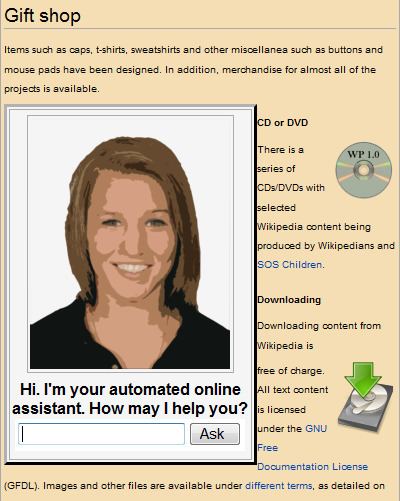 | ||
Customer service is the provision of service to customers before, during and after a purchase. The perception of success of such interactions is dependent on employees "who can adjust themselves to the personality of the guest". Customer service concerns the priority an organization assigns to customer service relative to components such as product innovation and pricing. In this sense, an organization that values good customer service may spend more money in training employees than the average organization or may proactively interview customers for feedback.
Contents
- Customer support
- Automated customer service
- Metrics and measuring customer service results
- Instant feedback
- Standardization
- Criticism
- References
From the point of view of an overall sales process engineering effort, customer service plays an important role in an organization's ability to generate income and revenue. From that perspective, customer service should be included as part of an overall approach to systematic improvement. One good customer service experience can change the entire perception a customer holds towards the organization.
Customer support
A customer support is a range of customer services to assist customers in making cost effective and correct use of a product. It includes assistance in planning, installation, training, trouble shooting, maintenance, upgrading, and disposal of a product. These services even may be done at customer's side where he/she uses the product or service. In this case it is called "at home customer services" or "at home customer support".
Regarding technology products such as mobile phones, televisions, computers, software products or other electronic or mechanical goods, it is termed technical support.
Automated customer service
Customer service may be provided by a person (e.g., sales and service representative), or by automated means. Examples of automated means are Internet sites. An advantage with automated means is an increased ability to provide service 24-hours a day, which can, at least, be a complement to customer service by persons.
Another example of automated customer service is by touch-tone phone, which usually involves a main menu, and the use of the keypad as options (i.e. "Press 1 for English, Press 2 for Spanish", etc.)
However, in the Internet era, a challenge has been to maintain and/or enhance the personal experience while making use of the efficiencies of online commerce. "Online customers are literally invisible to you (and you to them), so it's easy to shortchange them emotionally. But this lack of visual and tactile presence makes it even more crucial to create a sense of personal, human-to-human connection in the online arena."
Examples of customer service by artificial means are automated online assistants that can be seen as avatars on websites. It can avail for enterprises to reduce their operating and training cost. These are driven by chatterbots, and a major underlying technology to such systems is natural language processing.
Metrics and measuring customer service results
The two main ways of gathering feedback are: customer surveys and Net Promoter Score measurement, used for calculating the loyalty that exists between a provider and a consumer.
Customer service metrics that are followed by companies depend on the tool used for customer service. Most popular metrics include:
Instant feedback
Recently, many organizations have implemented feedback loops that allow them to capture feedback at the point of experience. For example, National Express has invited passengers to send text messages whilst riding the bus. This has been shown to be useful, as it allows companies to improve their customer service before the customer defects, thus making it far more likely that the customer will return next time. Technology has made it increasingly easier for companies to obtain feedback from their customers. Community blogs and forums give customers the ability to give detailed explanations of both negative as well as positive experiences with a company/organization.
Standardization
There are few standards on this topic. ISO and The International Customer Service Institute (TICSI) have published the following ones:
There is also an Information Technology service management standard: ISO/IEC 20000:2005. Its first part concerns specifications and its second part the code of practice.
Criticism
Some have argued that the quality and level of customer service has decreased in recent years, and that this can be attributed to a lack of support or understanding at the executive and middle management levels of a corporation and/or a customer service policy. To address this argument, many organizations have employed a variety of methods to improve their customer satisfaction levels, and other key performance indicators (KPIs).
